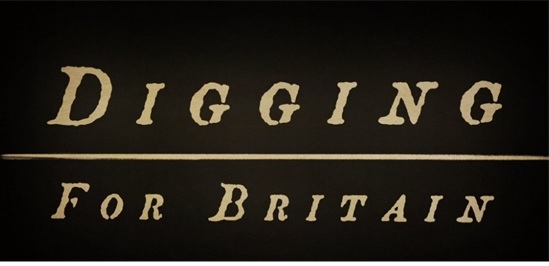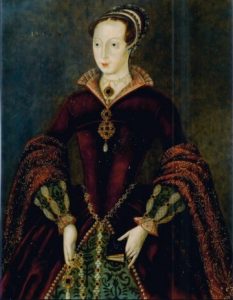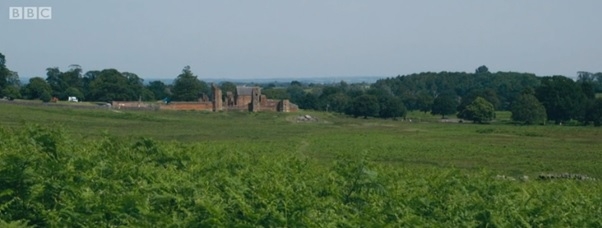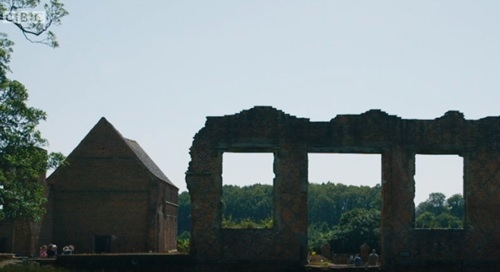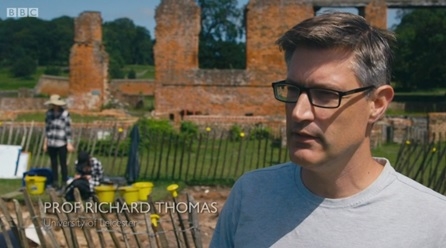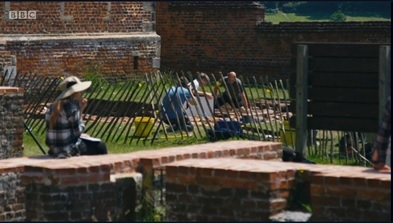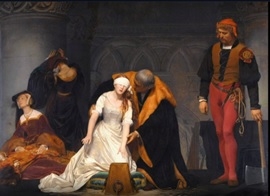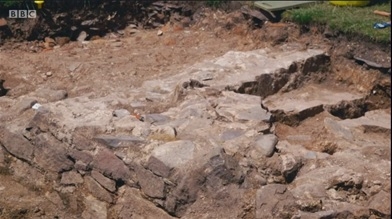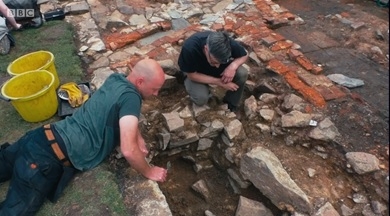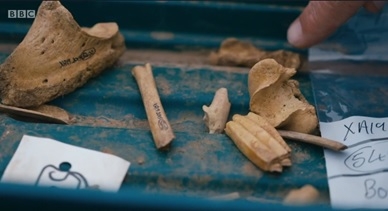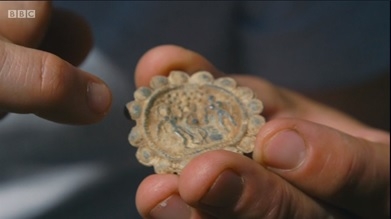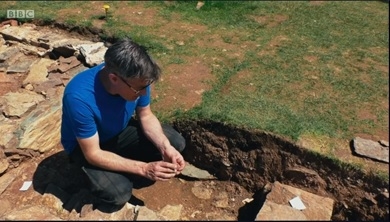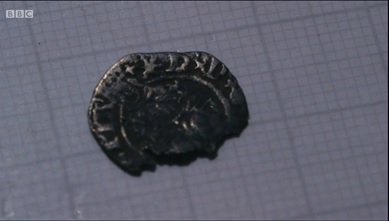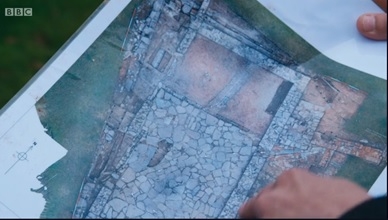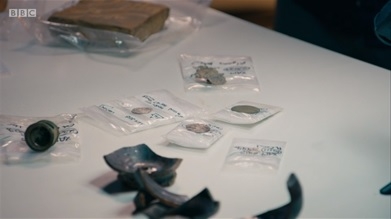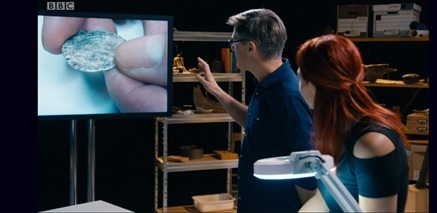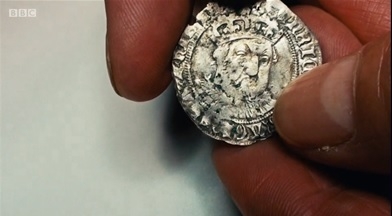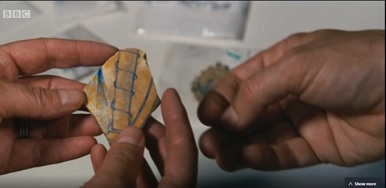Professor Alice Roberts – Our first dig takes us to the childhood home of Britain’s shortest reigning monarch. She was the first cousin of King Henry VIII’s son, Edward VI and she was on the English throne in 1553, from the 10th to the 19th of July. She’s known as the ‘Nine Days Queen’, Lady Jane Grey.
In the Leicestershire countryside lies Bradgate Park. 850 acres of stunning, rugged landscape. This ancient estate was the family seat of England’s often forgotten monarch, Lady Jane Grey, who is believed to have lived here as a child.
Professor Richard Thomas and his team from Leicester University are excavating within the remains of the estates main building, Bradgate House. This is thought to have been one of the first unfortified aristocratic houses in England, dating back to the early 16th century.
Richard is looking for evidence that could support that early date and the long-held theory that this was in deed the childhood home of Lady Jane.
Professor Richard Thomas – Very little information about Bradgate House, both in terms of the written record and in terms of images. We know next to nothing about the house as it looked in the 16th century.
Alice Roberts – Lady Jane was born in 1536, the great niece of King Henry VIII. She was raised as a devout Protestant. Before Henry VIII’s son, Edward VI died, he declared that his first cousin, Lady Jane should succeed him. She was proclaimed Queen at just 16 but England was in the middle of a power struggle.
Richard Thomas – There was a lot of turmoil over different religious sides. So Henry VIII sets up the church of England but there is still quite a strong Catholic following in England at the time. So there was a lot of tension between the two sides if you like.
Alice Roberts – Mary Tudor’s followers were determined to see the Catholic heir on the throne. Just nine days after Lady Jane Grey was declared Queen, she was deposed, locked up in the Tower of London and eventually executed.
Alice Roberts – At the dig, the team have made an unexpected discovery. It looks like the large upstanding brick building was constructed over something older.
Richard Thomas – I’m standing at the moment inside a room and inside that room, we’ve got this other brick structure, that is over on my left hand side and it has a tiled surface behind me. This is a fire place and we can tell that because we’ve got fire cracked tiles that belonged to the hearth. It’s beginning to look a little bit like a kitchen structure.
Alice Roberts – – But as they excavate further they realise it’s not just a kitchen, it’s the foundations of another entire house, pre-dating the larger brick building which has always been assumed to be Lady Jane’s home.
Richard Thomas – What do you think this structure is?
Archaeologist – Well potentially it might be a garderobe, which is the medieval word for a toilet.
Alice Roberts – Garderobes were the luxury loos of the Tudor era. A room with a seat connected to a shaft which dropped waste into a moat or drain below. Only the wealthiest households had one.
Archaeologist – After getting all the rubble out, we have found over 600 year old excrement.
Richard Thomas – Does it smell?
Archaeologist– It has a strange smell that you can’t really compare to anything else.
Alice Roberts – The team want to pin down the date of this mystery building. As the days pass they discover tantalising traces of the people who lived here. Including what they ate.
Richard Thomas – From our excavations we can work out what kind of animal it has come from, things like peacocks, some marine fish and some other exotic animals. And because we are in the middle of a deer park, we know that they were eating quite a lot of venison. We’ve got quite high status living here.
Alice Roberts – The team also find evidence that this was a religious household.
Richard Thomas – So I think one of my favourites has been this. It has got decoration on that appears to be Adam and Eve in the garden of Eden. You’ve got the apple tree and you can see the snake curling around the trunk of the tree.
Alice Roberts – Known as a pilgrim’s page, tokens like this often-depicted biblical stories or saints and were worn by the devout.
This land was owned by the Grey family long before lady Jane was born but it is not yet clear which generation of Greys lived in this earlier structure? The team are looking for clues to show exactly when this older building was in use and halfway through the dig, they have a break through.
Richard Thomas – This morning when we were clearing away some of this demolition layer in this area, we uncovered a sovereign penny, minted during the reign of Henry VIII. We don’t know the exact date of minting but somewhere between 1509 and 1547. That’s important because that gives us a date somewhere in the early to mid 16th century. We can say with some degree of confidence that these walls came down sometime in the first half of the 16th century.
Alice Roberts – This tiny coin suggests that this older building was in use when Lady Jane was a child. Richard now believes that these older foundations, not the upstanding ruins, are what’s left of the childhood home of England’s Nine Days Queen.
Alice Roberts – I’ve asked Richard to come and explain more about this exciting new revelation. So where’s that kind of mythology come from then? That what you see above ground was her house.
Richard Thomas – We’ve got historical records that tell us that these standing rooms were where she spent her childhood and we’ve always assumed that the brick structure was her house. When we started the project, we had absolutely no idea that we would be discovering an earlier house and that the upstanding structure would turn out to be later, so it was completely unexpected.
Alice Roberts – You’ve got some of the finds here, how do these relate to this building?
Richard Thomas – The coins have been really useful in determining the dates that the house was in use.
Richard Thomas – This is a silver coin that was minted in the Tower of London and it was minted somewhere between 1544 and 1547. She was born in 1536 so potentially, she’s 8 years old, running round Bradgate House at the time this coin is dropped on this floor surface and the it becomes sealed by another floor surface later on.
Alice Roberts – We’re getting this glimpse of a moment where this little girl is running around in the house, her great uncle is on these coins and she has no conception at all that she will eventually end up on the throne.
We have here some more objects that tell us about everyday life in the house?
Richard Thomas – This is a small fragment of a hand painted jug and the jug will have come from the Netherlands…Motif of the passion of the Christ.
Tells us about their trade connections, their status, to be able to afford these luxury imports but it is also telling us again about that centrality of religion to daily life.
Alice Roberts – And what about Lady Jane Grey herself? Do we know where she was buried?
Richard Thomas -,Because she was of royal descent, she gets executed at the Tower of London and she is supposed to have been buried at one of the chapels at the Tower. Of course, all sort of local legends, that the body was spirited back to Bradgate and was reburied but we have no expectation that that was the case.
Alice Roberts –Why do we not call her Queen Jane?
Richard Thomas – It’s really interesting, why she is still Lady Jane Grey?The reason is that although she was proclaimed Queen, she never had a coronation, so it is effectively a technicality that we don’t call her Queen Jane.
Alice Roberts – She had no idea when she was a little girl that she would end up sitting on the throne, and then she’s on the throne for 9 days and that is effectively a death sentence.
Richard Thomas – And aged 16, it’s a real tragic story.
Screenshots (c) BBC4, except for those marked otherwise.

